Comments from the Chair
City of San Antonio Budget
You can explore the city’s current and proposed Budget FY 2020. This page includes links to the entire proposed budget, and opportunities to provide feedback. You can also read the City Managers's budget presentation to Council. The budget continues using the “Equity Lens” and continues its focus on housing affordability. City Council is expected to vote on the FY 2020 Budget on September 12th.
Climate Action & Adaptation Plan
The second "Draft for Public Discussion" of the City of San Antonio's (CoSA) Climate Action & Adaptation Plan (CAAP) has been released. See the SA Climate Ready website for background and to submit comments/answer survey. Public comments on the plan can be submitted until September 6th.
The revised draft has moved essential equity discussions from near the beginning, to near the end of the report. Many specifics are removed, especially regarding interim fossil fuel reduction goals. (See Rivard Report: New San Antonio Climate Plan Draft Scrubbed of Specific Cuts to Fossil Fuels).
| Second draft | First draft | |
|---|---|---|
| Mitigation strategy #1 | Reduce the carbon intensity of San Antonio's energy supply. Work with CPS Energy on the implementation of their “Flexible Path” to drive towards carbon neutrality by 2050. | Work with CPS Energy to continue to reduce the emissions factor of supplied electricity to reach an emissions factor of 0.0 kg CO2e / kWh by 2050. |
| As evolving technologies becomes [sic] increasingly economical and efficient, promote and incentivize the use of cleaner fuel sources for existing buildings, including industrial process applications. | Promote and incentivize fuel switching from natural gas to electric for existing buildings, including industrial process applications. | |
| Transportation mitigation | Encourage the accelerated adoption of and transition to cleaner and more efficient vehicle technologies for personal vehicles, trucks, transit, and freight. | Transition to carbon-free transport by implementing strategies to accelerate the adoption of electric or other carbon-free personal vehicles, trucks, transit, and freight to reach 100% penetration by 2050. |
I do not criticize city staff for these changes, clearly done at Mayoral direction in the face of City Council wavering and CPS and other intense opposition. It now appears the “Business Community” is willing to tolerate this plan, no doubt assuming it will not disrupt their profitable “business as usual” models. As a result, the CAAP now appears to have enough Council support for passage, scheduled October 17th.
The changes to the plan are of course hugely disappointing for the Climate Action SA coalition groups, including the Alamo Group of the Sierra Club, as well as our Lone Star Chapter, the National SC Beyond Coal campaign, Public Citizen, etc. It is clear that Valero, NuStar, the auto dealers' trade group, the Manufacturers Association, the SA Chamber, and others have weighed in heavily AGAINST any framework that confronts climate reality head on.
Their selfish promotion of “business as usual” is currently getting outside support from the Texas Public Policy Foundation (TPPF), a far right fossil fuel funded “think tank” holding events to peddle their decades old doubts about climate change realities, together with their religious faith in “free enterprise” solutions for all problems.
They are on the losing side of history, as “In total, 22 states, 550 cities, and 900 companies with operations in the US have made climate commitments” according to Google. We must recognize that COSA NEEDS TO PASS CAAP. As toothless as it now is, it DOES provide a valuable framework for POTENTIAL ACTION. We must also recognize that the fight to IMPLEMENT CAAP with STRONG MEASURES, begins as soon as CAAP passes. Each and every meaningful strategy will obviously be fought tenaciously by the “Business Community”. A clear example of this involves our efforts to get solar ready and electric vehicle (EV) ready language for new construction inserted into local Uniform Development Code (UDC) rules. These modest changes are attacked by selfish business interests that continue to drag out discussions on these matters for more than a year!
Transparency and accountability from OUR PUBLIC utilities
CPS
In my opinion, a primary source of the difficulties of the CoSA CAAP process, from its beginnings in 2017 until now, has been the role played by our “public” utility CPS Energy. It is not surprising that Valero should use its considerable weight to oppose good health and sustainable living in San Antonio. It is, however, quite appalling that we should have to FIGHT SO HARD AGAINST OUR “PUBLIC” UTILITY CPS! (See Rivard Report: CPS Energy Lobbied for Changes Before Agreeing to Climate Action Plan).
I believe CPS, and its CEO Paula Gold Williams (PGW), wanted to keep close control of this process in order to protect themselves from bad publicity and from meaningful changes in their “business as usual”. They invested a small amount (for them) of $500,000 to fund CAAP development. Something happened early on that led to the virtual removal of UTSA from the CAAP process (I suspect UTSA wanted academic independence in its data analysis and CPS would not allow that, wanting to guard the data and messaging carefully).
The consultant group Navigant, I suspect, had to perform to CPS requirements, leaving us with many intended report deficiencies, including especially the cost estimates that were urged for inclusion from the beginning. CPS put observers--but NOT participants--at every single CAAP related meeting. Multiple efforts to engage CPS in cost benefit discussions about shut down of Spruce 1 and 2 coal plants were rebuffed. (There has been virtually NO new energy renewable/conservation/efficiency initiative from CPS since Doyle Beneby left as CEO several years ago, STEP 1 and shut down of Deeley coal plants part of his legacy, not PGW).
During the CAAP process CPS announced two energy plans--its “Flexible Path” Plan last year, and this year a modification it calls “Bundled” (or should it be “Bungled”?). These plans are in my opinion a public relations effort to rebrand their “business as usual”, and they show continued coal into the 2060s. After the release of CAAP’s first draft CEO PGW sent comments we finally obtained by Freedom of Information Act (FOIA) request, comments (see link in Rivard Report) which illustrate my conclusion that CPS has ZERO interest in being responsive to COSA and its citizens.
I anticipate that CPS will continue to actively resist, oppose and obstruct ALL efforts to:
- open up its opaque governance structure,
- introduce public resource planning processes,
- schedule ANY early shut down of its polluting coal and gas plants,
- change rate structures from its sell more make more model, and most importantly,
- increase COSA oversight of CPS (and SAWS).
In allowing CPS to fund the CAAP process, the Mayor relinquished all control over the result, which may also explain his completely hands off stance to the entire process. More than a decade ago, CPS lied its way into a nuclear power expansion process, and thanks to determined resistance from Alamo SC and other groups, the cost overruns and lies were uncovered, the nuclear expansion projects stopped, and CPS Board and CEO replaced. The time approaches for our current Mayor and City Council to take similar action, to move CPS out of the path of a successful CAAP, successful rate structure changes, successful public generation planning processes and true public transparency and accountability.
SAWS
Transparency, accountability and governance are also major problems with our water utility SAWS. Board members serve at their own discretion, ignoring appointment, reappointment and term limit rules. Board and CEO institute major policy changes and pursue aggressive Texas legislative lobbying agendas, with virtually no oversight from City Council.
Next year Vista Ridge water will start flowing, and we will have to accept this very expensive new water even at times of great abundance from other sources. SAWS is now beginning another rate increase process, and we demand this process provide truly broad based community representation, and not be stacked with developer interests as it has been in the past. The proposed City Budget would increase contributions from SAWS, partially to make up for anticipated decreases from declining revenues at CPS. Mr. Puente has argued against this change, saying it will force a (still larger) rate increase, even as past rate increases have produced an unprecedented level of cash on hand at SAWS.
Alamo SC joins with League of Independent Voters in a coalition calling for an independent audit of Vista Ridge, so Council can assess and learn from the findings of what was good and bad about this project, so as to not repeat mistakes in future “Public Private Partnerships” (P3). It is time to put the PUBLIC back in our Public Utilities.
Mobility
TXDoT (Dept of Transportation) has awarded almost $1 Billion for more roadway construction around SA, something celebrated by Commissioner Kevin Wolff, while acknowledging that none of this money goes for needed transit improvements. So we can expect another decade of road construction on area freeways like IH-10, IH-35, 410 and 1604, resulting in a decade of delays, to accomplish what--return us to today’s levels of congestion! It’s a wonderful world...Our air quality, now in marginal non-attainment, is almost sure to fail to return to attainment levels in time to avoid going into moderate non-attainment, which will bring costly regulatory oversight for decades.
Free enterprise (TPPF also has a history of fighting transit here) does not seem to be saving us, at least not yet... ConnectSA is not ready yet for full public engagement (anticipated later this fall) prior to a community vote fall of 2020. Thanks to TPPF and others, rail is NOT under consideration (see Express-News Chris Tomlinson article, Trains and rail make more sense than cars and roads, on our national rail failure), and proposals so far are quite modest. Transportation is second only to CPS as a major source of area carbon emissions. The latest SA2020 Report shows continued deterioration in our mobility.
We need to push for REAL MOBILITY SOLUTIONS FINALLY, including RAIL. Yes we are very late, yes TPPF will be back against that, and yes, WE MUST WIN THIS BATTLE.
by Terry Burns, M.D., Alamo Group Chair
General Meeting: Enhancing Our Parks & Green Spaces to Assist in Meeting San Antonio's Air & Water Quality Goals, Reduce Stormwater Runoff, and Increase Water & Carbon Storage in Soils & Vegetation
Would you like to increase our green space? Would you like the soil to facilitate stormwater capture? Would you like stormwater clean enough for our children to play in? Would you like stormwater policies to enhance air quality? Would you prefer your tax money pay for green scape, or concrete channelization?
You are invited to attend our next General Meeting, where Deborah Reid, MS will tell us how this can all be accomplished.
Tuesday, September 17th
6:00 p.m. (program starts 6:30)
William R. Sinkin Eco Centro, 1802 North Main Avenue
Map
This meeting is open to the public
Come and hear Ms. Reid tell us about her innovative work at the Greater Edwards Aquifer Alliance, assisting the community to develop stormwater management policies promoting green infrastructure and low impact development. This approach encourages the use of existing city parks and green spaces, attempting to preserve natural channel design while protecting the city from flooding. Ms. Reid will also tell us how this is creating a new management paradigm incorporating three major SA goals: reducing flooding, improving water quality, and improving air quality.
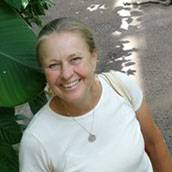
Deborah (Debbie) Reid, MS is the Technical Director of the Greater Edwards Aquifer Alliance. She has a BS in Soil and Crop Management and an MS in Horticulture, both from Texas A&M University. She has worked in these areas for over 40 years, with a natural resource management focus for the past 20 years. She was the first Nature Preserve Coordinator for Parks and Recreation, and the first City Arborist for Development Services. Subsequently, she joined the Peace Corps to volunteer in Mexico and Guatemala, sharing her skills on soil conservation, water quality, biodiversity and carbon sequestration.
We Must Unite Now to Save Honey Creek State Natural Area and Guadalupe River State Park
On August 20th approximately 90 people came together at a meeting hosted by the Texas Commission for Environmental Quality (TCEQ) held in Bulverde, Texas to voice opposition to a plan they believe will cause irreparable harm to two Texas treasures.
Developers of Honey Creek Ranch propose to release up to 500,000/gallons per day of treated sewage effluent from a planned subdivision of 2,396 new homes on 592 acres directly into an unnamed tributary that flows into Honey Creek just upstream of the Honey Creek State Natural Area and Guadalupe River State Park.
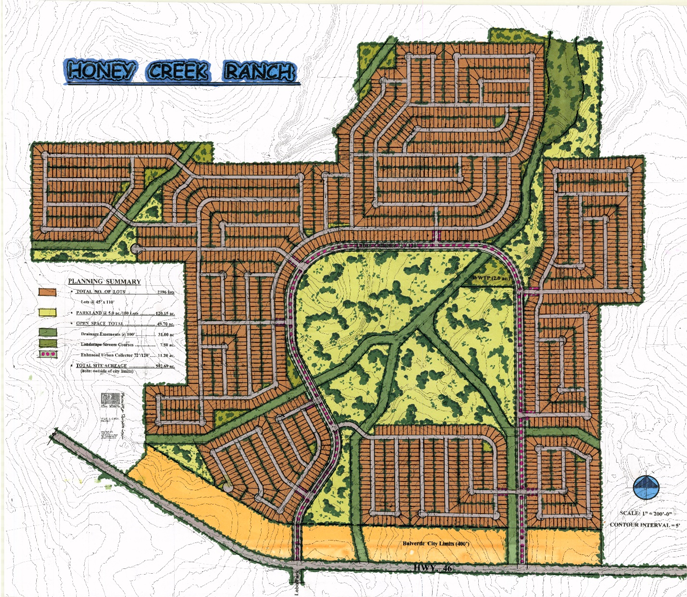
Preliminary water quality testing of the receiving water body conducted by the Greater Edwards Aquifer Alliance (GEAA) and the Meadows Center for Water and the Environment indicate that Honey Creek is one of the clearest-flowing streams in the Texas Hill Country. Guadalupe River State Park, immediately downstream of the confluence of Honey Creek and the Guadalupe River, has long been one of our state’s most popular places to toss in a tube and 'float the Guadalupe.' During average conditions, a substantial portion of the flow into the State Park would consist of nutrient-laden effluent, impacting recreational activities such as swimming, fishing, canoeing, and inner tubing on the river.
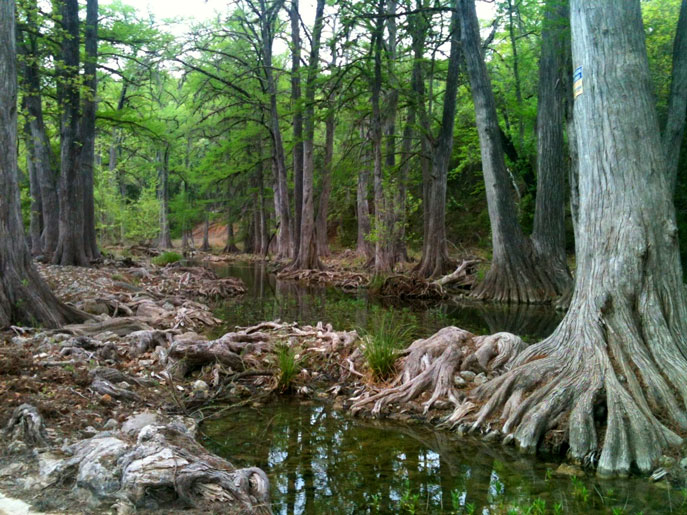
At the TCEQ meeting, GEAA was joined by citizens affiliated with the Meadows Center for Water and the Environment, Texas Cave Management Association, Bexar Grotto, Texas Parks and Wildlife Department, Texas Rivers Protection Association, Bulverde Area Republican Women, and local economic development agencies, as well as local residents – all elucidating a host of reasons why TCEQ should deny this permit. No one spoke in favor of issuing the discharge permit.
It was noted that the testimony offered at the meeting likely represented more well qualified expertise (in the fields of water chemistry, karst geology, aquatic biology, economic development, land use planning) than has ever opposed a TCEQ permit application of any type. All predicted that the introduction of such a large amount of sewage effluent into the pristine waters of Honey Creek would permanently alter an aquatic ecosystem that is internationally famous as unique to the Texas Hill Country. Testimony also warned that floods would cause effluent from the sewage treatment plant to flow into Honey Creek Cave, the longest known cave in Texas, a tributary to the Guadalupe River where you can swim right into the aquifer.
Given that the citizens of Texas have made such a substantial investment in the Honey Creek State Natural Area and Guadalupe River State Park, GEAA asked that all citizens who requested standing in contesting the permit be recognized. TCEQ has not yet ruled on approving the permit. In our experience of opposing the introduction of sewage effluent directly into Hill Country waterways that recharge the Edwards and Trinity aquifers, we expect that the permit will be approved.
The Greater Edwards Aquifer Alliance is taking the lead in organizing opposition and raising funds to cover the legal expenses of contesting this permit. A generous donor has offered $15,000 to match tax deductible donations of $100 or more. You can mail donations to GEAA at PO Box 15618, San Antonio, Texas 78212. Be sure to note Honey Creek on the check.
You can learn more about the impact of sewage on Hill Country waterways and about this cause on GEAA’s Waste Water page. You can sign up to receive e-mail alerts by sending your e-mail address to info@AquiferAlliance.org. (Be sure to write Honey Creek in the subject line). And, you can enter the discussion, post pictures, and keep up with the latest news at the Save Honey Creek Facebook page.
Deadly cyanobacteria contaminating Hill Country waterways
On another topic, recent reports of dog deaths from contact with cyanobacteria have hit the news lately – nationally and here in Texas. On August 5th the City of Austin issued a warning “advising pet owners to not allow pets to swim in or drink water from Lady Bird Lake after being notified that two dogs have died after swimming in the lake.” An August 14th advisory confirmed “recent samples showed a low presence of blue green algae in the Barton Creek area of Lady Bird Lake. These samples did test positive for neurotoxins.”
Cyanobacteria, an algae named for its blue green color, usually occurs during the summer months in still or slow-moving water, such as lakes, ponds, and weak streams, when the water is warm, gets plenty of sunlight, and is rich in nutrients like phosphorous and nitrogen – and, though not always the case, it can produce toxins that are harmful to humans and dogs. Harmful Algae Blooms (HAB’s), can produce toxins. CyanoHABs and their toxins can harm people, animals, aquatic ecosystems, the economy, drinking water supplies, property values, and recreational activities, including swimming and commercial and recreational fishing. Since warmer temperatures are on the horizon, is this a risk that we want to take by allowing the introduction of even more nutrients into our Hill Country waterways?
by Annalisa Peace, Executive Director, Greater Edwards Aquifer Alliance
Twenty Lakes Basin, Inyo National Forest, Central-eastern California
In October, 2018, I drove around the Sierra Nevada Range, car camping and doing a bunch of day hikes in Yosemite, Kings Canyon, Sequoia, and Death Valley national parks. Of all, this is the only one I might do again (in the other direction). Not because the rest weren't superb, but this one has magnificent alpine vistas and there were no crowds this time of year. The loop route is nine miles with elevation difference less than 400', though it is nearly all above 10000'. I was seriously tired afterwards due to lack of acclimation and age. Here is more detail.
This is from Saddlebag Campground, just east of Tioga Pass off CA Hwy 120 (Tioga Rd), and the east entrance to Yosemite. Waters here drain east to Mono Lake, from which waters don't drain at all. Waters to the west of the pass go to the Toulumne River which goes to the Hetch-Hetchy Reservoir (a major challenge for the Sierra Club that was lost) and thence to San Francisco. There was an article in this newsletter June 2018 on Tioga Rd though Yosemite.
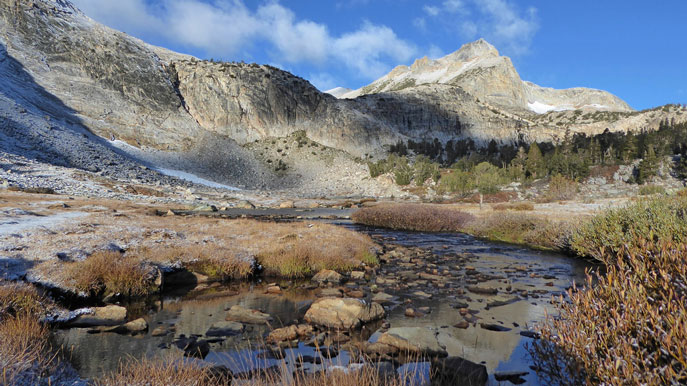
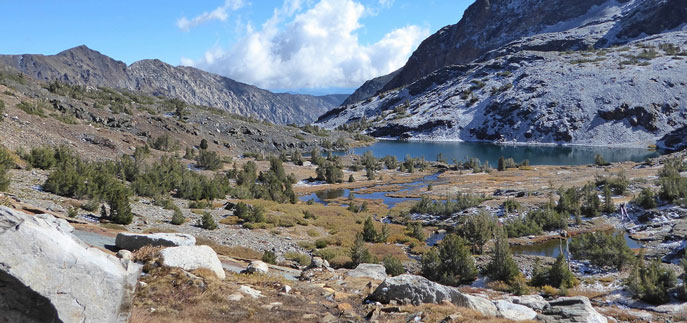
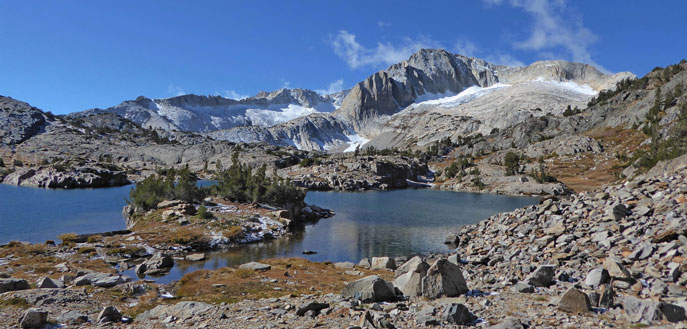
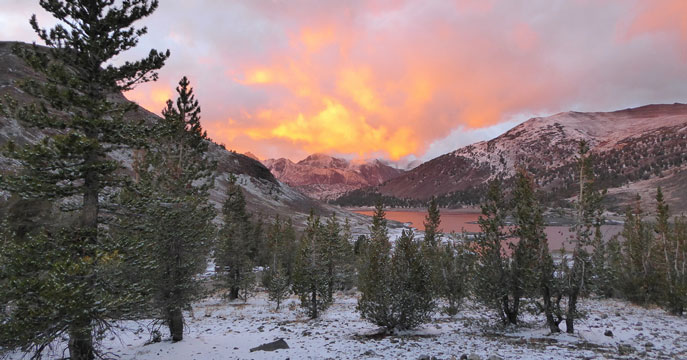
Proposal for the Nantahala of Texas on the Guadalupe
I propose that the following dams owned by the Guadalupe Blanco River Authority, Dunlap, McQueeny, Placid, Meadow, Gonzales and Wood, be modified and cut down in height as done at “Rio Vista Dam” in San Marcos, Texas. Separate but not owned by GBRA would include MA Wade Dam and the City of Gonzales Dam.
See this drawing of the proposed improvements: The Nantahala of Texas - Drawing 819-1 Rev 1
Whitewater venue
We are in effect creating “The Nantahala of Texas on the Guadalupe River” for whitewater recreation and the following amenities should be included on each set of rapids:
- Seating and Restroom attendance for 2000 people expandable to 5000.
- Class 1 and 2 Rapids.
- Preposition Uprights to accommodate Zip lines for the Gates on the Course
- Portage Trails on rapids that are well marked.
- Parking for Put in & Take out of each Rapid
- Signage indicating mileage and rivers conditions
Linear parks
- A linear park from New Braunfels to Seguin using the combined surface reservoir of Dunlap, McQueeny, Placid and Meadow with a combined acreage 1157 acres equal to the 50th largest State Park in Texas and over 40 miles in length.
- The second and third linear parkways would be Lake Gonzales and Lake Wood they have a combined surface reservoir acreage of 925 acres.
- The above 2037 acres equals to the 32nd largest State Park in Texas.
Water supply enhancement
- Creates a natural aeration and water polishing method for the local water suppliers
- Catchment basins and drainage offset to the river for clarification and retention
Benefits
- Restores property values with a long-term plan instead of a questionable and expensive repair.
- An Economic solution that is in line with the tourism and recreational values.
- Available revenues through Private, Local, State and Federal Funds.
- Creates tourist destination spot for Texas, the US and abroad.
- White water venue that is open year-round
- Non-Technical River segments for canoes and kayaks in between Rapids
- Easy access off Major Roads
- Restoration of a river to its natural state.
- Enhance migration and reproduction of fish, birds, mammals and other native species.
- Reduction of Invasive Plant and Fish Species: Hydrilla, Asian Carp and Snakehead Fish
- Creates a natural aeration and water polishing method for the local water suppliers.
- Natural Storm Water Control and Drainage Features
Action plan
Recommend a Task Force of all concerned parties be established to evaluate the potential of this Proposal.
by Gib Hafernick, founder of Alamo City Rivermen

Outings: The Call of the Wild
Visit the Alamo Sierra Club Outings page on Meetup for detailed information about all of our upcoming Sierra Club Outings.
The Alamo Sierran Newsletter
Richard Alles, Editor
Published by The Alamo Group of the Sierra Club, P.O. Box 6443, San Antonio, TX 78209, AlamoSierraClub.org.
The Alamo Group is one of 13 regional groups within the Lone Star Chapter of the Sierra Club.
Changed your mailing address?
Have you moved? Let us know by sending your old address, your new address and your member number (look on the upper left corner of your mailing label) to: address.changes@sierraclub.org.
Go online for the latest news and events
 |